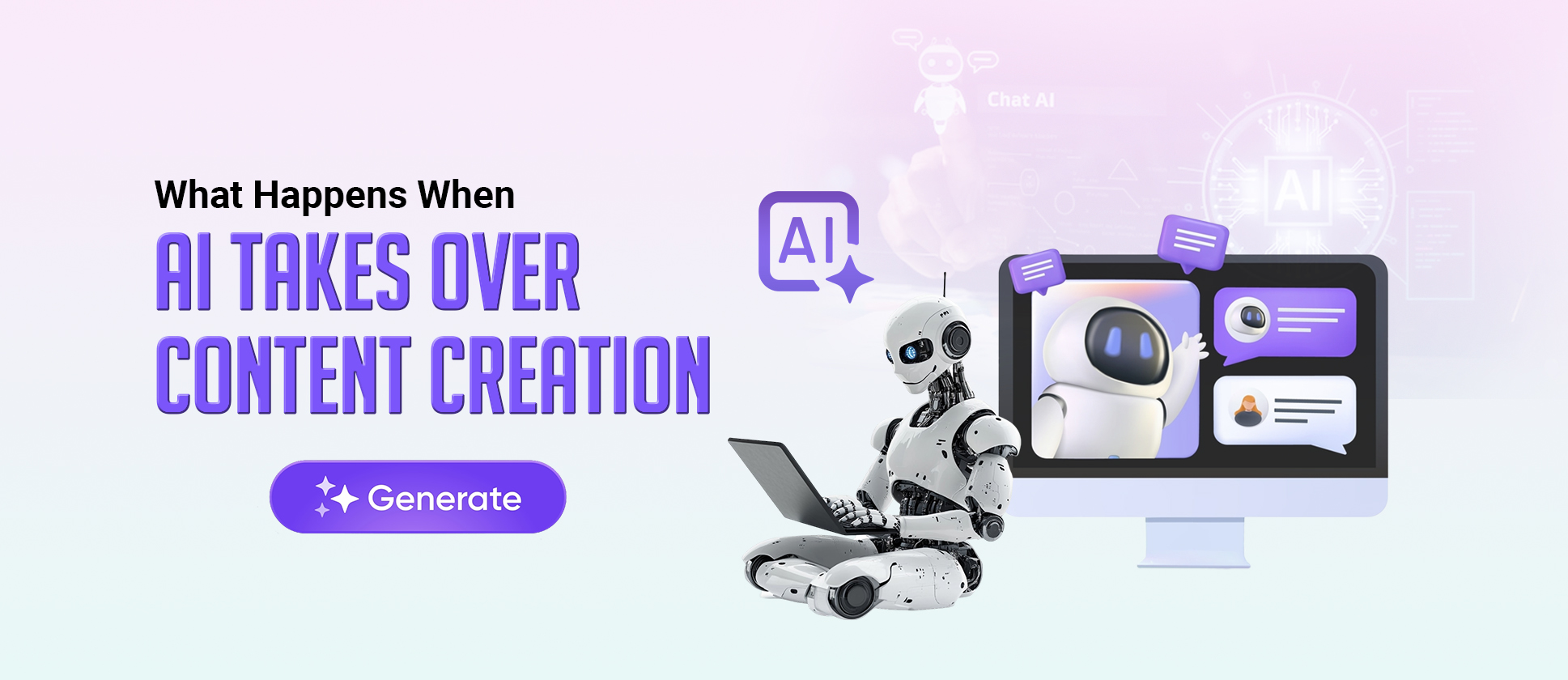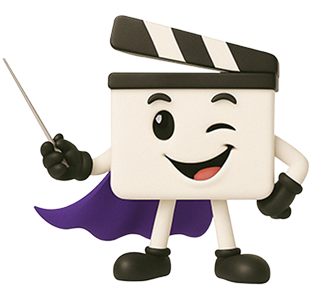AI is changing the game for how businesses and marketers create content. By 2024, the global AI market reached over $93 billion, and it’s expected to grow by 38.1% every year. This rapid growth highlights how AI is shaking up digital marketing, content creation, and short-form content.
AI boosts human creativity by taking over tasks like writing blog posts, creating social media content, and turning long-form content into catchy short videos. This helps creators work smarter, not harder, while focusing on the big picture and new ideas.
In this blog, we’ll show you how to use AI in your content creation, dive into the tools that make it possible, and give you tips on how to add AI to your strategy for the best results. Whether you’re a blogger, marketer, or business owner, this guide will help you tap into AI’s full potential for your content.
What is AI content creation ?
AI content creation just means using smart tools to help make videos, images, or written stuff faster. Tools like ChatGPT can write text for you, and apps like Midjourney can turn simple ideas into images. A lot of creators and businesses are using these tools to save time and get more done.
But to really level up, many are teaming up with pros. Agencies that handle video editing in USA and offer content creation services in USA & UK make it super easy to turn your ideas into great-looking content without the stress of doing it all yourself.
Should I Use AI for Content Creation?
When tools like ChatGPT first appeared, many creators wondered if AI would take over their jobs. The simple answer is no. AI for content creation is a helper not a replacement. AI can’t produce creative ideas or emotional depth like humans. But used correctly, it becomes a smart assistant that simplifies your workflow and saves time.
Benefits of AI for Content Creation
Here’s how AI for content creation can support your process:
- Draft outlines or scripts instantly
- Edit and rephrase content effiziently
- Convert blog posts into video or social formats
- Process and analyze large data sets
These tools are fast, cost-effective, and perfect for handling repetitive work. This lets you focus more on storytelling and creativity.
Limitations of AI for Content Creation
AI has its limits, especially without human input. These are key drawbacks:
- It mainly repackages existing information
- Content often feels robotic, generic, or bland
- No emotional connection or original storytelling
- Risk of plagiarism or inaccurate outputs
- Cannot replace human insight or strategic thinking
Relying solely on AI for content creation can lead to bland work that fails to resonate with your audience.
If you’re focused on delivering high-quality content at scale, pairing AI for content creation with a scalable creative partner can really level up your output. A top-tier editing team like ShortVids offers unlimited video editing, fast turnaround, flexible editing styles, and round-the-clock support all at a predictable, fixed cost
This approach keeps your content consistent, polished, and scalable without the hassle of hiring or managing freelancers.
Understanding the Tools and Tech Behind AI Content Creation
AI is changing how we create content by making tasks easier and more creative. From brainstorming to publishing, AI tools help optimize workflows, improve SEO, and make visuals and videos faster. With AI, you can produce content at scale while keeping quality high across all platforms.
Let’s break down the AI tools that simplify each step of the content creation process.
1. Creating a Data-Driven Content Strategy with AI
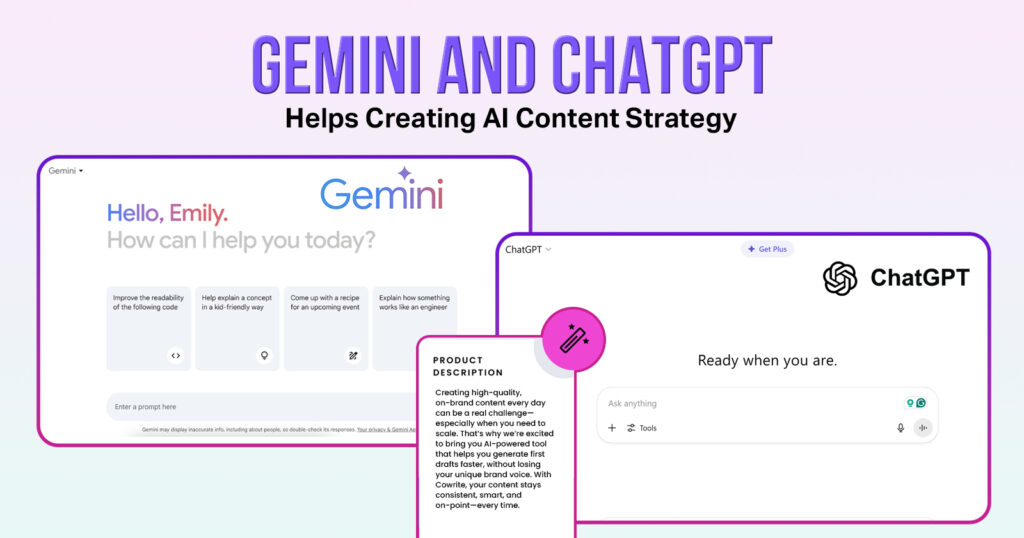
AI helps build a data-driven content strategy by analyzing trends, audience behavior, and competitors’ moves. Here’s how it works:
Trend Identification: Tools like Gemini and ChatGPT help you track market trends in real time, so you can find topics that your audience will love. For example, companies like HubSpot use AI to monitor what’s trending and adjust their content accordingly.
Audience Insights: AI tracks engagement patterns to make sure your content matches what your audience is searching for. Platforms like Google Analytics use AI to analyze user behavior and suggest the best content strategies.
Content Gaps: AI compares your content with competitors’ and helps you find areas where you can improve. This ensures your content is unique and fills gaps that others may have missed. For example, Gemini helps marketers identify high-traffic keywords to boost visibility.
At ShortVids, we apply these AI-powered strategies to create engaging video content for clients like Michael Makabi in real estate. He uses AI video creation to stay active online with minimal effort, allowing him to grow his business while AI handles the content.
2. Boosting SEO with AI for Keyword Research and Optimization
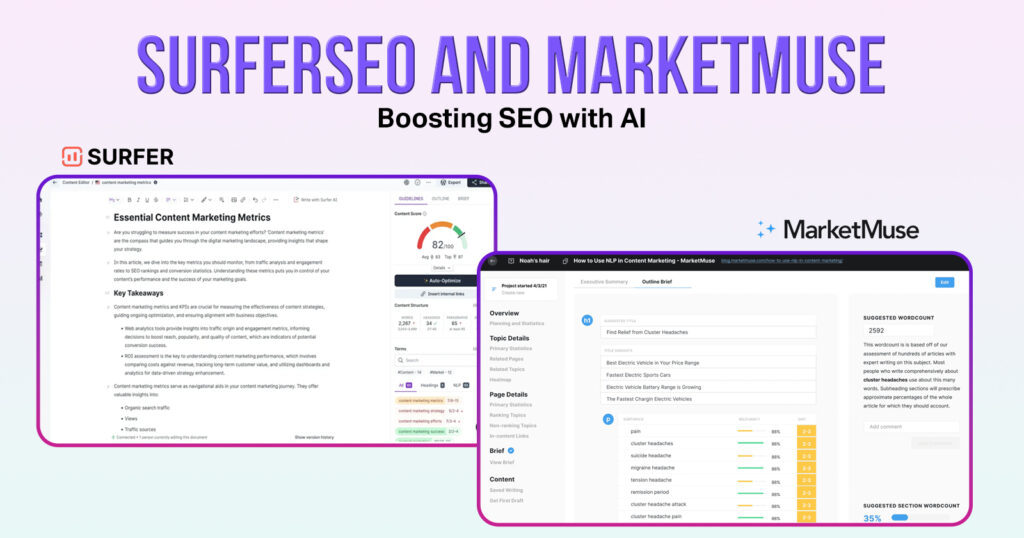
AI is making SEO easier by automating keyword research and optimization, making your content easier to find. Here’s how it works:
- Effortless Keyword Research: AI tools like SurferSEO and MarketMuse help find long-tail keywords and low-competition phrases. These tools automate the research process and improve your chances of ranking. Companies like SEMrush use AI to uncover hidden keyword opportunities, helping businesses stay ahead.
- Competitor Insights: AI analyzes what your competitors are doing and highlights the keywords they’re missing, helping you stay ahead. For example, tools like SpyFu track competitor keywords and offer suggestions on how to beat them.
- Content Optimization with AI: AI suggests internal links and content structures that improve SEO and navigation. For example, after using SurferSEO, AI can suggest keyword adjustments to make your content rank better.
For example, after using SurferSEO, AI suggests additional SEO improvements like internal links or keyword adjustments.
3. Streamlining Content Ideas with AI to Automate Your Creative Process

AI makes content planning quicker and more efficient by automating brainstorming and organizing ideas. Here’s how it works:
- Tools like RightBlogger help generate topic clusters based on keywords, giving you a blueprint for your content. HubSpot uses AI to create topic clusters, making it easier to create content around a main theme.
- AI suggests content based on SEO data, ensuring you target high-traffic topics. For example, BuzzSumo uses AI to track trending topics and provide fresh content ideas that perform well.
- AI tracks current trends and helps generate ideas that are both timely and relevant. Tools like ContentBot monitor trends and suggest content ideas that align with what’s popular.
ShortVids uses AI to turn these ideas into engaging video content, ensuring it’s ready to share across platforms.
4. AI-Driven Drafting For Structured Writing
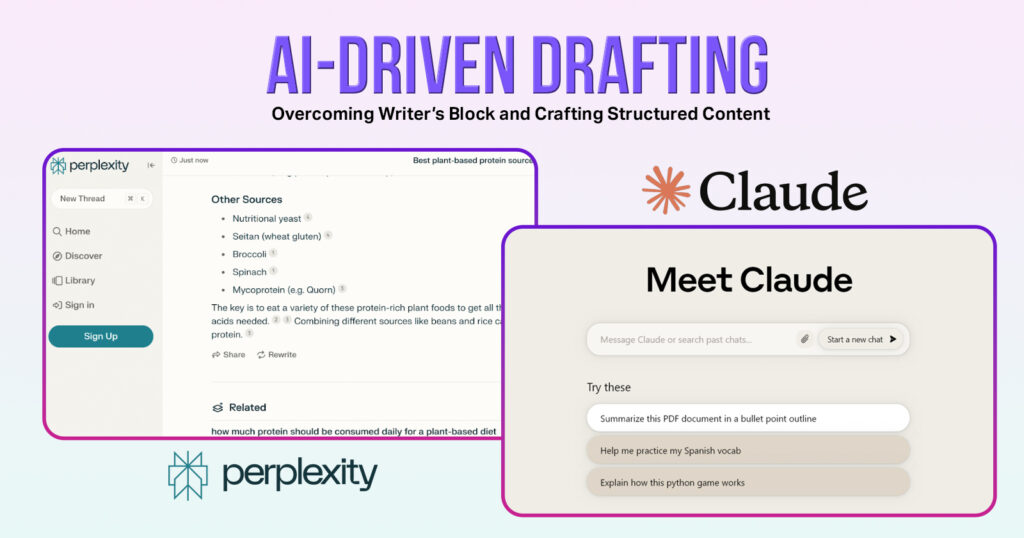
AI helps you overcome writer’s block and organize your content quickly. Here’s how:
Overcoming Writer’s Block: AI tools like ChatGPT, Perplexity, and Claude AI help generate structured drafts fast. Just give them a topic, and AI will create a solid foundation for your content. For example, writers use AI to overcome blocks and create initial drafts effortlessly.
Content Outlining: AI helps create detailed outlines, ensuring your content has a logical flow. For example, if you’re writing about sustainable marketing, AI might suggest subtopics like ethical branding, helping you stay focused.
And to enhance video content, use AI-driven video creation tools from ShortVids. Gene Slade took a fresh approach by using the baby version trend, where we created a mini Gene to narrate his regular content in a fun way, keeping his audience engaged and entertained. This technique not only captured attention but also provided content that was easy to share.
5. Optimizing Content Quality with AI for Perfect Editing

Once your content is written, AI helps polish and improve it. Here’s how:
- AI tools like Grammarly and RightBlogger’s Grammar Fixer catch mistakes and make sure your content is consistent. For example, Grammarly helps writers fix errors and improve their writing style.
- AI adjusts your content’s tone based on the platform. It can be casual for Instagram or professional for LinkedIn. For example, tools like Hemingway Editor suggest tone changes to suit different platforms.
- AI ensures keywords are placed correctly and internal links are optimized for better rankings.
At ShortVids, we take this editing process to video content as well, using AI to make sure your videos match your brand’s tone and are optimized for maximum impact.
Free AI Tools Comparison
Here’s a comparison of free AI tools for content creation:
| AI Tool | Prompt Limits | Multimodal Support | MMLU Score | Best For |
|---|---|---|---|---|
| ChatGPT 4.0 | 5-10 every 5-6 hours (free version) | Text, Image, Video | 84% | Generalists, Casual Users |
| Gemini | Unavailable | Text, Image, Video | 87% | Google Users, Workspaces, Multimedia Projects |
| Claude 3.5 | 40 messages a day | Text, Image, Video | 86% | Technical Documents, Enterprises, Data Analysis |
| Grok 3 | Unavailable | Text, Image, Video | Unavailable | Developers, Logical Work, Non-English Tasks |
| DeepSeek V3 | None | Text, Image, Video | 87% | Developers, Technical Reasoning |
These AI tools are critical in making content creation faster, smarter, and more efficient across all stages of your workflow
AI for Social Media and Content Distribution
AI plays a crucial role in automating content distribution and social media management. Tools like Buffer, Hootsuite, and Later use AI to turn long-form content into social media posts and automate publishing schedules. Here’s how AI makes it easier:
1. Social Media Repurposing and Engagement with AI
AI tools like Buffer, Hootsuite, Later, and Opus AI help automate the process of turning long-form content into social media posts and manage publishing schedules. While these tools are great for efficiency, they might not always match the precision that human editors provide.
AI Strengths
- AI tools like Buffer and Hootsuite quickly generate captions and schedule posts based on audience data.
- They automate the repurposing of long-form content into social media posts, saving time and effort.
AI Limitations
- Subtitles generated by AI can sometimes be inaccurate, affecting content quality.
- AI lacks the nuance and precision of human editors, which can result in awkward cuts and poor timing.
For example, we worked with Gene Slade to repurpose his Lead Ninja classes into short clips for Instagram and Facebook. Similarly, we helped Colin create YouTube Shorts from his existing content, ensuring the timing and subtitles were perfect, making the content more engaging and easier to follow. While AI can automate part of this, at ShortVids, we bring in human expertise to ensure videos are perfectly timed, clear, and include accurate subtitles for maximum engagement.
2. Automating Content Distribution and Scheduling
AI-powered tools like Buffer and Later predict the best times to post based on data. While effective, these tools depend on past audience behavior, which can sometimes be inaccurate or miss real-time changes.
AI Strengths
- Automated scheduling based on past engagement data.
- Helps maintain consistent content flow across platforms.
AI Limitations
- Over-reliance on past data, missing current trends or shifts in audience behavior.
- Lack of flexibility in reacting to real-time changes in audience sentiment.
ShortVids automate scheduling and content distribution, but we also fine-tune everything to ensure your content is posted at the most effective times. This approach maximizes engagement without depending solely on historical data predictions.
The Future of AI in Content Creation
As AI keeps improving, it’s becoming a bigger part of content creation. Here’s how creators can stay ahead:
Advancements in Personalization
AI will help creators make more personalized content, tailored to what their audience really wants. Tools like SurferSEO are already helping content creators adjust their work based on the latest trends and what their audience is interested in. This means more targeted blog posts, videos, and social media updates.
Enhanced Marketing Strategies
AI is also improving marketing strategies by using data to help creators fine-tune their content for more reach and engagement. For example, Buffer and Hootsuite predict the best times to post content based on past engagement, so creators can get their content in front of the most people possible.
By embracing these changes, creators can stay competitive in an AI-driven world and make sure their content keeps grabbing attention.
Conclusion
At ShortVids, we combine AI with real expertise to create high-quality, engaging videos. Our clients, like Gene Slade and Colin, trust us to repurpose their long-form content into short, impactful videos that are perfectly timed and have the right subtitles.
As the digital world keeps changing, working with ShortVids helps you stay ahead. We handle the content creation so you can focus on growing your business, keeping your brand fresh and relevant in today’s fast-paced market.
Frequently Asked Questions
Yes, many content creators use AI tools to streamline content creation, enhance creativity, and optimize strategies for better engagement.
Yes, AI can help generate content by providing ideas, writing drafts, and optimizing it for SEO and audience engagement.
AI can create original content by using existing data and patterns, but it still benefits from human input for creativity and nuance.
Yes, AI can generate Instagram posts by creating captions, suggesting hashtags, and designing visuals based on trends and audience preferences.
You can use ChatGPT by providing prompts or topics, and it will generate text, blog posts, social media content, or even ideas for videos.

